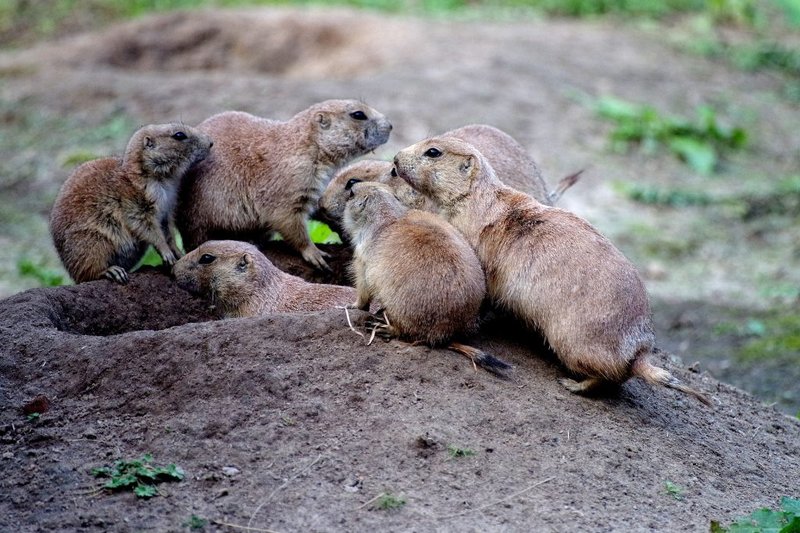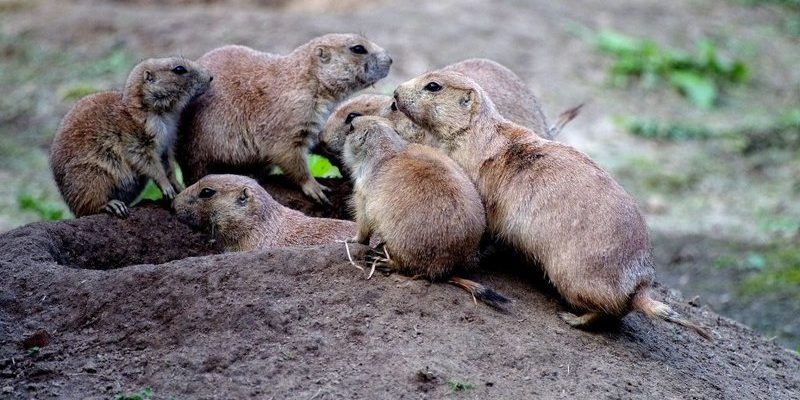
What’s even more interesting is how these little guys contribute to their ecosystem. They’re not just adorable; they play a crucial role in their habitats. So, grab your favorite drink, and let’s dive into some awesome facts about prairie dogs that will make you appreciate these busy burrowers even more!
1. They’re Not Dogs, But They’re Quite Social
You might be surprised to learn that despite their name, prairie dogs aren’t canines at all! They belong to the squirrel family and are more closely related to ground squirrels. Prairie dogs are particularly social creatures and live in large colonies known as “coteries.” These communities can be quite massive, with hundreds of individuals sharing an intricate underground network of tunnels.
Now, imagine a big family reunion where everyone is chatting, munching on snacks, and looking out for one another. That’s kind of what life is like for prairie dogs. They communicate through a variety of barks and chirps, which helps them alert each other about potential dangers. In fact, some studies suggest their calls can even convey specific information, like what kind of predator is nearby and how far away it is!
2. Their Towns Are Architectural Marvels
If you think about it, living underground must require a lot of planning. Prairie dog towns can be quite elaborate, with tunnels that stretch up to 30 feet deep and cover many acres. Some towns have been recorded to host over 100 individuals living in harmony. These tunnels serve as homes, nurseries, and safe havens from predators.
Imagine if your living room, kitchen, and even a playground were all connected by a series of secret passageways! Prairie dogs dig these burrows using their strong little claws, and they often create more than one entrance. This clever design helps them escape if a hawk or other predator tries to swoop in for a snack. Their homes aren’t just functional; they’re also a testament to their impressive burrowing skills!
3. They Play an Important Role in Their Ecosystem
Prairie dogs might be small, but they have a big impact on their environment. As they dig and create their burrows, they help aerate the soil, which improves its quality and allows water to seep in better. This can benefit surrounding plants and grasses, making their towns a lush habitat for other creatures too.
Moreover, their grazing habits help maintain the grasslands. By munching on the grass, they promote new growth, which is essential for the health of their habitat. It’s like they’re little gardeners, shaping the prairie landscape with their eating habits!
4. They Have Unique Social Structures
Think of a bustling neighborhood where everyone has a role. Prairie dog societies are quite similar! Each coterie typically has a dominant male, several females, and their offspring. This structure helps keep things organized, and they often have designated lookout members who stay vigilant while others forage.
When danger is near, these lookout prairie dogs will stand upright on their hind legs and emit alarm calls, allowing others to quickly retreat to their burrows. It’s a fascinating example of teamwork and communication. Honestly, we could all learn a bit from their sense of community!
5. They’re Highly Intelligent
Prairie dogs are not just cute; they’re also clever. They’ve shown impressive problem-solving skills and adaptability. For instance, they can identify different types of threats based on size and color. If a predator is spotted, they adjust their alarm calls accordingly, conveying how serious the threat is.
Research has even shown that prairie dogs can recognize human faces! They sometimes react differently to people they perceive as a threat versus those they deem harmless. You might say they’re little experts at reading their environment and the beings within it. How cool is that?
6. They Have a Unique Diet
You might be wondering what these little furry friends eat to stay healthy and full of energy. Prairie dogs are herbivores, mainly munching on grasses, seeds, and even the occasional flower. Their diet plays a crucial role in keeping their teeth trimmed, as their incisors grow continuously.
Their eating habits also help maintain the health of the grasslands. You could say they’re nature’s lawn mowers, selectively grazing on certain plants while letting others flourish. This balance is essential, as it allows various species to thrive in their habitats.
7. Prairie Dogs Are Prey for Many Predators
In the wild, prairie dogs have many predators. Hawks, coyotes, foxes, and even snakes see them as tasty meals. Because they live in open grasslands, prairie dogs rely heavily on their social structure and communication for protection. Their alertness helps them avoid getting caught off guard.
It’s a tough world for these little guys. Being small means they have to be quick and clever to survive. When you spot them darting in and out of their burrows, remember that it’s not just play—it’s survival in action!
8. Their Communities Are Declining
While prairie dogs are fascinating creatures, they face significant threats. Habitat loss due to urban development, agriculture, and climate change has led to declining populations in many areas. Additionally, they’re often seen as pests by farmers, leading to extermination efforts.
Conservation efforts are in place to protect these unique animals and their habitats. By understanding their importance in the ecosystem, we can help ensure that future generations can appreciate these cute little critters.
9. They Can Live Quite a While
Did you know that a prairie dog can live up to 8 years in the wild? That’s not too shabby for a small rodent! Their lifespan is often longer in protected areas where they face fewer threats from predators and human activity.
The way they live in colonies also contributes to their survival. Living in groups provides safety in numbers, and their social structure helps them thrive together. It’s like having a built-in support system, which can make a big difference in their longevity.
10. They’re a Symbol of the American West
Lastly, prairie dogs hold a special place in the heart of the American West. They have become an iconic symbol of the prairie ecosystem and are often celebrated in local culture, art, and wildlife conservation efforts. Their quirky behaviors and social structures capture the curiosity of many nature lovers.
When you think about the vast prairies of the Midwest, prairie dogs are often the first creatures that come to mind. They remind us of the beauty and complexity of nature, encouraging us to learn more about the ecosystems we share.
In summary, prairie dogs are fascinating creatures that contribute significantly to their environment. Their social structures, communication skills, and ecological importance make them worthy of admiration. So, the next time you spot one of these little furballs, take a moment to appreciate the bustling life they lead beneath the ground!

